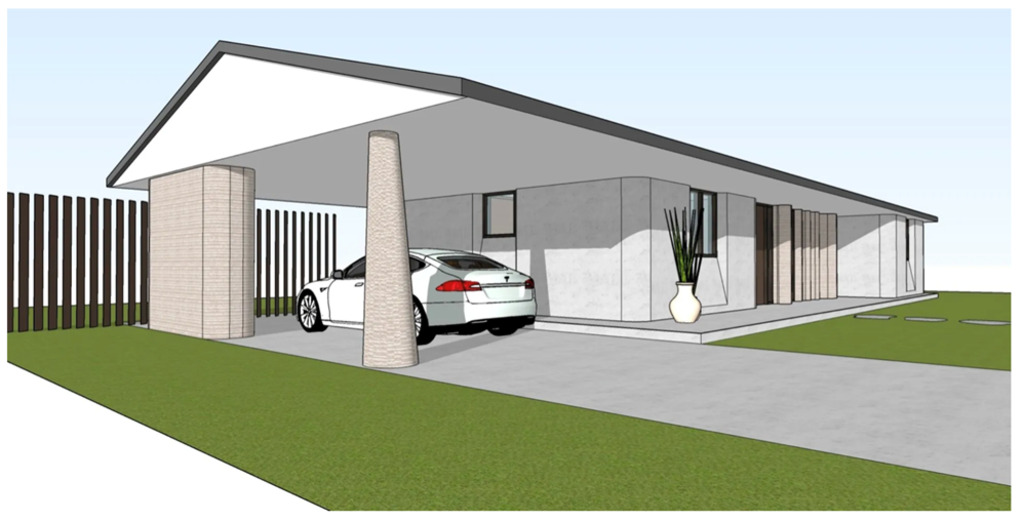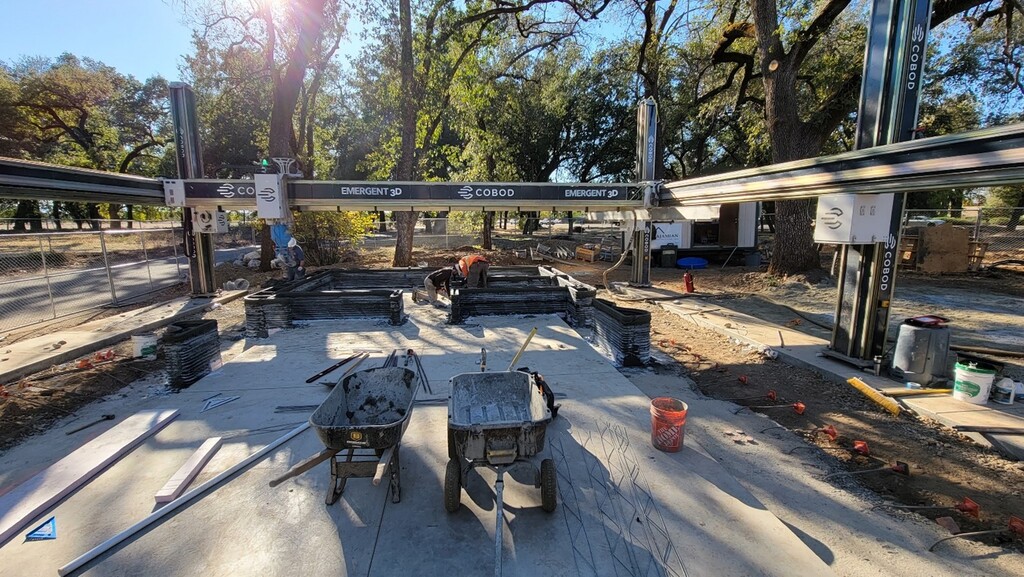Approximately 200 miles north of San Francisco, surrounded by national forests lies Redding with its population of 100,000. Not one of California’s most famous cities was affected by the numerous forest fires that hit the city. Redding is experiencing more than 100 fires per year. The Redding area got hit the worst in 2018 in the Carr fire, where 1,100 houses were lost to the fires, 270 of these directly in the town of Redding. Neighboring Paradise lost more than 11,000 homes, causing damages of 16 billion USD and 85 fatalities.
But, the days of wildfires devastating thousands of homes in Northern California might soon be over. Enterprise Park in Redding recently witnessed the erection of the first 3D printed house in California made with real concrete, far more resilient to wildfires than stick build. The concrete was made using the D.fab concrete solution developed by Cobod and Cemex. The house with its 1,200 SF was funded by the City of Redding to help bringing the exciting new technology, that can help solve the California housing crisis. The house was made by Emergent3D, a local 3D printing contractor, using a Bod2 3D Construction printer from Cobod.


Matthew Gile, founder and chief visionary of Emergent3D said: “Our Wildfire Restoration House in Redding opens up new opportunities for fire-resilient affordable housing in Northern California. Compared to stick build, 3D concrete printing technology not only offers more durable homes but opens up for greater design possibilities and more energy and material-efficient projects”.
The house with 3 bedrooms, 2 bathrooms and an open floor plan was designed by architect Benjamin Albertson for maximum convenience of residents. It has large double windows that look out the back of the home to retain seclusion while letting in maximum natural light and views that are provided through floor-to-ceiling glass in an open living space. Also, the construction features organically curved walls in the center of the house to define the entryways and add visual appeal and distinctiveness to the building. Don Ajamian, the CEO of Emergent3D, said: “Emergent3D’s ability to employ concrete printing technology allows us the opportunity to get away from building things that are only straight, square and plumb – the rules by which I have built for my entire career. When you add to this that the cost of the concrete for making the resilient and durable walls was only $4,687 USD and that it only took 30 hours of printing to make it, it is clear that 3D concrete printing offers the solutions that Northern California has been looking for”


Philip Lund-Nielsen, Co-founder of Cobod and head of Americas, said: “We are excited to have Emergent3D as our customer and to see how they with the help of 3D construction printing are helping Northern California fight the wildfires. Don and his team have shown an amazing passion since we engaged the first time and they progress so fast, that we cannot wait to see their next project”.